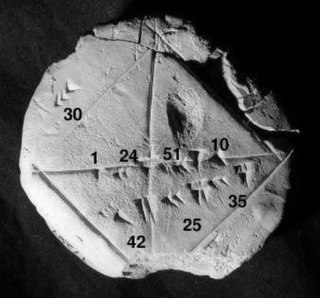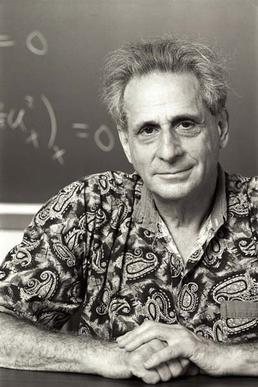Related Research Articles

The Drake equation is a probabilistic argument used to estimate the number of active, communicative extraterrestrial civilizations in the Milky Way Galaxy.

Enrico Fermi was an Italian and later naturalized American physicist, renowned for being the creator of the world's first nuclear reactor, the Chicago Pile-1, and a member of the Manhattan Project. He has been called the "architect of the nuclear age" and the "architect of the atomic bomb". He was one of very few physicists to excel in both theoretical physics and experimental physics. Fermi was awarded the 1938 Nobel Prize in Physics for his work on induced radioactivity by neutron bombardment and for the discovery of transuranium elements. With his colleagues, Fermi filed several patents related to the use of nuclear power, all of which were taken over by the US government. He made significant contributions to the development of statistical mechanics, quantum theory, and nuclear and particle physics.
The Fermi paradox is the discrepancy between the lack of conclusive evidence of advanced extraterrestrial life and the apparently high likelihood of its existence. As a 2015 article put it, "If life is so easy, someone from somewhere must have come calling by now."

Numerical analysis is the study of algorithms that use numerical approximation for the problems of mathematical analysis. It is the study of numerical methods that attempt at finding approximate solutions of problems rather than the exact ones. Numerical analysis finds application in all fields of engineering and the physical sciences, and in the 21st century also the life and social sciences, medicine, business and even the arts. Current growth in computing power has enabled the use of more complex numerical analysis, providing detailed and realistic mathematical models in science and engineering. Examples of numerical analysis include: ordinary differential equations as found in celestial mechanics, numerical linear algebra in data analysis, and stochastic differential equations and Markov chains for simulating living cells in medicine and biology.
Quantum chemistry, also called molecular quantum mechanics, is a branch of physical chemistry focused on the application of quantum mechanics to chemical systems, particularly towards the quantum-mechanical calculation of electronic contributions to physical and chemical properties of molecules, materials, and solutions at the atomic level. These calculations include systematically applied approximations intended to make calculations computationally feasible while still capturing as much information about important contributions to the computed wave functions as well as to observable properties such as structures, spectra, and thermodynamic properties. Quantum chemistry is also concerned with the computation of quantum effects on molecular dynamics and chemical kinetics.

Stanisław Marcin Ulam was a Polish-American mathematician and nuclear physicist. He participated in the Manhattan Project, originated the Teller–Ulam design of thermonuclear weapons, discovered the concept of the cellular automaton, invented the Monte Carlo method of computation, and suggested nuclear pulse propulsion. In pure and applied mathematics, he proved some theorems and proposed several conjectures.
Monte Carlo methods, or Monte Carlo experiments, are a broad class of computational algorithms that rely on repeated random sampling to obtain numerical results. The underlying concept is to use randomness to solve problems that might be deterministic in principle. They are often used in physical and mathematical problems and are most useful when it is difficult or impossible to use other approaches. Monte Carlo methods are mainly used in three problem classes: optimization, numerical integration, and generating draws from a probability distribution.

Computational physics is the study and implementation of numerical analysis to solve problems in physics. Historically, computational physics was the first application of modern computers in science, and is now a subset of computational science. It is sometimes regarded as a subdiscipline of theoretical physics, but others consider it an intermediate branch between theoretical and experimental physics — an area of study which supplements both theory and experiment.

Hans Albrecht Bethe was a German-American theoretical physicist who made major contributions to nuclear physics, astrophysics, quantum electrodynamics, and solid-state physics, and who won the 1967 Nobel Prize in Physics for his work on the theory of stellar nucleosynthesis. For most of his career, Bethe was a professor at Cornell University.
In physics or engineering education, a Fermi problem, also known as a order-of-magnitude problem, is an estimation problem designed to teach dimensional analysis or approximation of extreme scientific calculations, and such a problem is usually a back-of-the-envelope calculation. The estimation technique is named after physicist Enrico Fermi as he was known for his ability to make good approximate calculations with little or no actual data. Fermi problems typically involve making justified guesses about quantities and their variance or lower and upper bounds. In some cases, order-of-magnitude estimates can also be derived using dimensional analysis.
Nicholas Constantine Metropolis was a Greek-American physicist.
A back-of-the-envelope calculation is a rough calculation, typically jotted down on any available scrap of paper such as an envelope. It is more than a guess but less than an accurate calculation or mathematical proof. The defining characteristic of back-of-the-envelope calculations is the use of simplified assumptions.

Martin David Kruskal was an American mathematician and physicist. He made fundamental contributions in many areas of mathematics and science, ranging from plasma physics to general relativity and from nonlinear analysis to asymptotic analysis. His most celebrated contribution was in the theory of solitons.
In physics and mathematics, an ansatz is an educated guess or an additional assumption made to help solve a problem, and which may later be verified to be part of the solution by its results.
In mathematical modeling, a guess value is more commonly called a starting value or initial value. These are necessary for most optimization problems which use search algorithms, because those algorithms are mainly deterministic and iterative, and they need to start somewhere. One common type of application is nonlinear regression.

Understanding the structure of the atomic nucleus is one of the central challenges in nuclear physics.
Scientific wild-ass guess (SWAG) is an American English slang term meaning a rough estimate made by an expert in the field, based on experience and intuition. It is similar to the slang word guesstimate, a portmanteau of guess and estimate.

Estimation is the process of finding an estimate or approximation, which is a value that is usable for some purpose even if input data may be incomplete, uncertain, or unstable. The value is nonetheless usable because it is derived from the best information available. Typically, estimation involves "using the value of a statistic derived from a sample to estimate the value of a corresponding population parameter". The sample provides information that can be projected, through various formal or informal processes, to determine a range most likely to describe the missing information. An estimate that turns out to be incorrect will be an overestimate if the estimate exceeds the actual result and an underestimate if the estimate falls short of the actual result.
John Anthony Adam is a British-American applied mathematician known for his work on patterns in nature and on mathematical modeling of the growth patterns of cancer and blood vessels. He is University Professor of Mathematics at Old Dominion University in Virginia.
References
- ↑ guess Online Etymological Dictionary
- 1 2 guesstimate Dictionary.com Unabridged (v 1.1)
- ↑ guesstimate Merriam-Webster On-line Dictionary
- ↑ guesstimate MSN Encarta Dictionary. Archived 2009-10-31.
- ↑ guesstimate Archived 2008-03-16 at the Wayback Machine American Heritage Dictionary
- ↑ Compact Oxford English Dictionary guesstimate
- ↑ "Guesstimate with confidence using confidence intervals" from back cover of Statistics for Dummies
- ↑ Guesstimate; Grades 4-6 NTTI Lesson Plan
- ↑ Guesstimation: Solving the World's Problems on the Back of a Cocktail Napkin, Tony Mann, Times Higher Education Supplement
- ↑ The Drake Equation Archived 2009-09-26 at the Wayback Machine WeAreNotAlone.net
- ↑ Economic outlooks often rely on guesstimation, M. Ray Perryman, San Antonio Business Journal
- ↑ Weinstein & Adam (2008) Problem 5.1
- ↑ Weinstein & Adam (2008) Problem 10.5